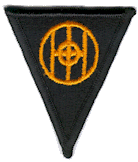
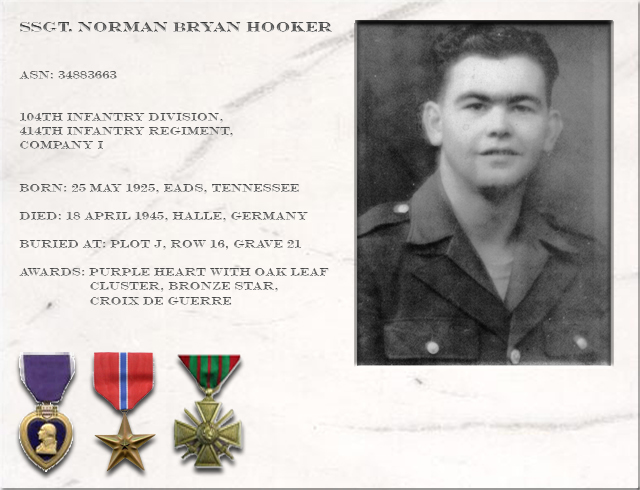
Norman Bryan, “Buddy” Hooker was born May 25, 1925 to Frederick A. and Ruby Bryan Hooker in the Bethany Community, Eads, Tennessee. He attended Cordova School through the 8th grade. Norman then attended Collierville High School but before graduated he was inducted into the Army on August 20, 1943.
 |
83rd
ID patch |
He first served with the 63rd at Camp Van Doran, Mississippi but became a part of the 83rd Infantry Division, 331st Regiment, Company C, and trained at Ft. Breckenridge, Kentucky, before leaving New York for England.
Private Hooker landed on Omaha Beach in the invasion of Normandy D-Day +12, June 18 and on June 21-24 his unit relieved the 502nd Infantry of the 101st Airborne Division some of the first to hit the beaches. The Germany enemy was the 6th Parachute Division and the feared 2nd SS Panzer Division.
Norman was wounded in the
thigh by 50 caliber machine gun fire in the hedgerow fighting in France on July
6, 1944, south of Carentan near Meautis. He was then sent to Hospital 297 in
England to recuperate for approximately three months.
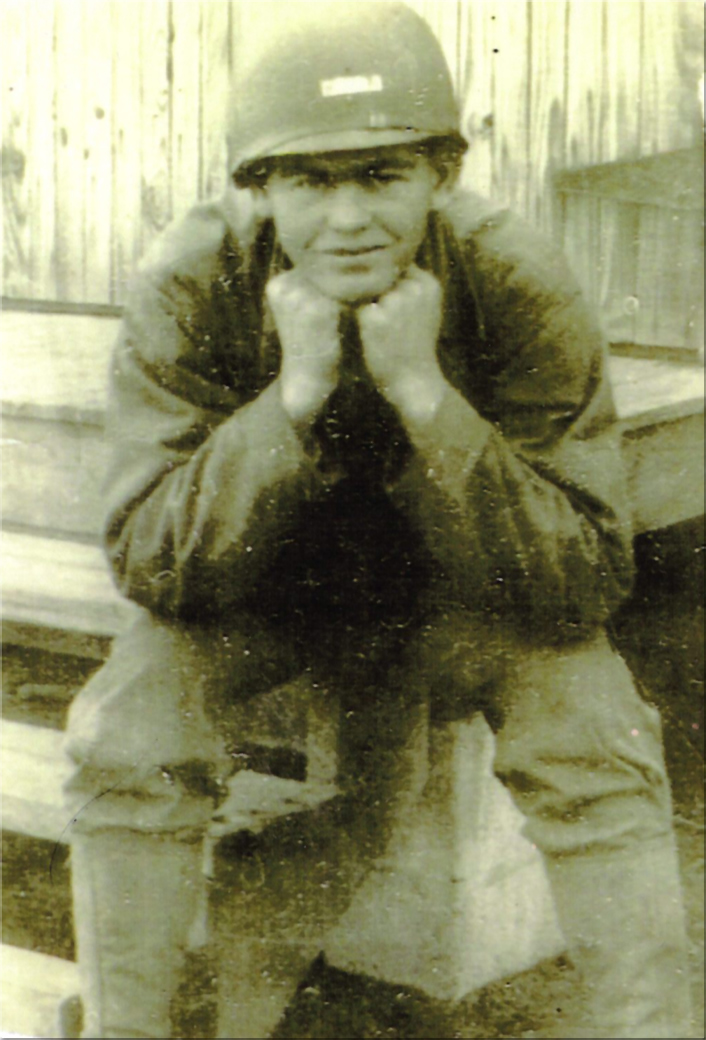 |
SSGT
Norman B. Hooker posing in happier times |
Before October 23, 1944 he was sent back into combat as a replacement to the Timberwolves, the 104th Infantry Division, 414th Regiment, Company I. He joined them when they landed in France and served the remainder of the war as a scout with the fearless night fighting unit. This division was the first to sail directly from the United States into combat zone in Europe. It was here that he became a member of a specialized group of the combat infantry scouts called Rogue’s Raiders, the best of the battalion. Norman earned the Expert Infantry Badge for his combat skills and was cited in the History of the Timberwolves, as one of the most outstanding of these specialized scouts. He again fought in France, and through Belgium, Holland, and Germany. Norman received a battlefield promotion to Staff/Sgt. For his leadership skills.
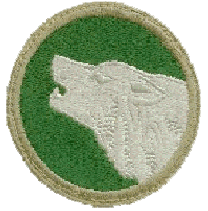 |
104th
ID Patch |
With the 104th he fought in the Battle of the Dykes beginning in Belgium through Holland where his division was attached to the First Canadian Army under the British Commander Montgomery and when the 104th moved into Germany they relieved the U.S. 1st Infantry Division at Aachen. Here the 104th participated in the biggest air assault of World War II. In the assault of the Siegfried Line they clawed their way past Hill 287 and to the Roer River. The push to the Inde River was referred to by the Germans as “the most terrible and ferocious battle in the historyof wars” and the Stars and Stripes described the shelling of Inden as “the heaviest artillery concentration ever experienced by American troops”. In the march from the Roer to Rhine River they confronted the Germans in the Ardennes or Battle of the Bulgle and captured the great city of Cologne which the Germans fought “as if it were the Muese, the Marne, and the Somme of the last war all rolled into one”. This assault led to the encirclement of the Ruhr where they crossed the Rhine at Remagen in a mad 193-mile dash to the Paderborn which resulted in the entrapment of 335.000 Germans. In their last phase of the German campaign the Timberwolves crossed the Wesser along the route to Nordhausen and the Hartz Mountains and then to the Saale River and the city of alle.
Staff/Sgt. Norman Bryan Hooker was Killed in Action, on the third day of intense fighting, by sniper in the chest. Death was instantaneous. It happened on a beautiful spring, sunny day around 2:00 p.m., April 18, 1945 in Halle, Germany shortly before the war was over in Europe on May 8, 1945. This was one city the Americans chose not to bomb since it was so close to the eventual end of the war. This decision saved thousands of American wounded and German lives.
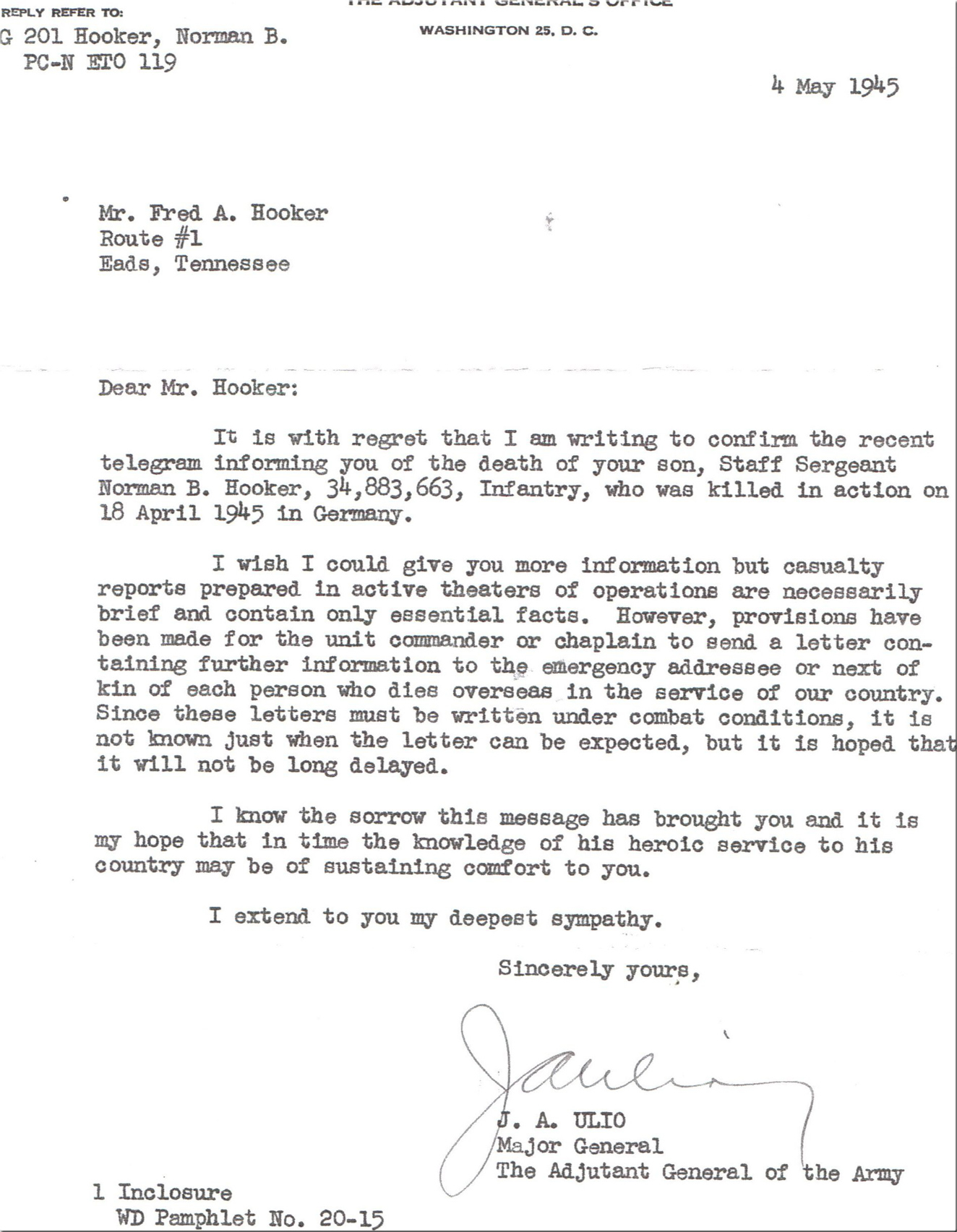 |
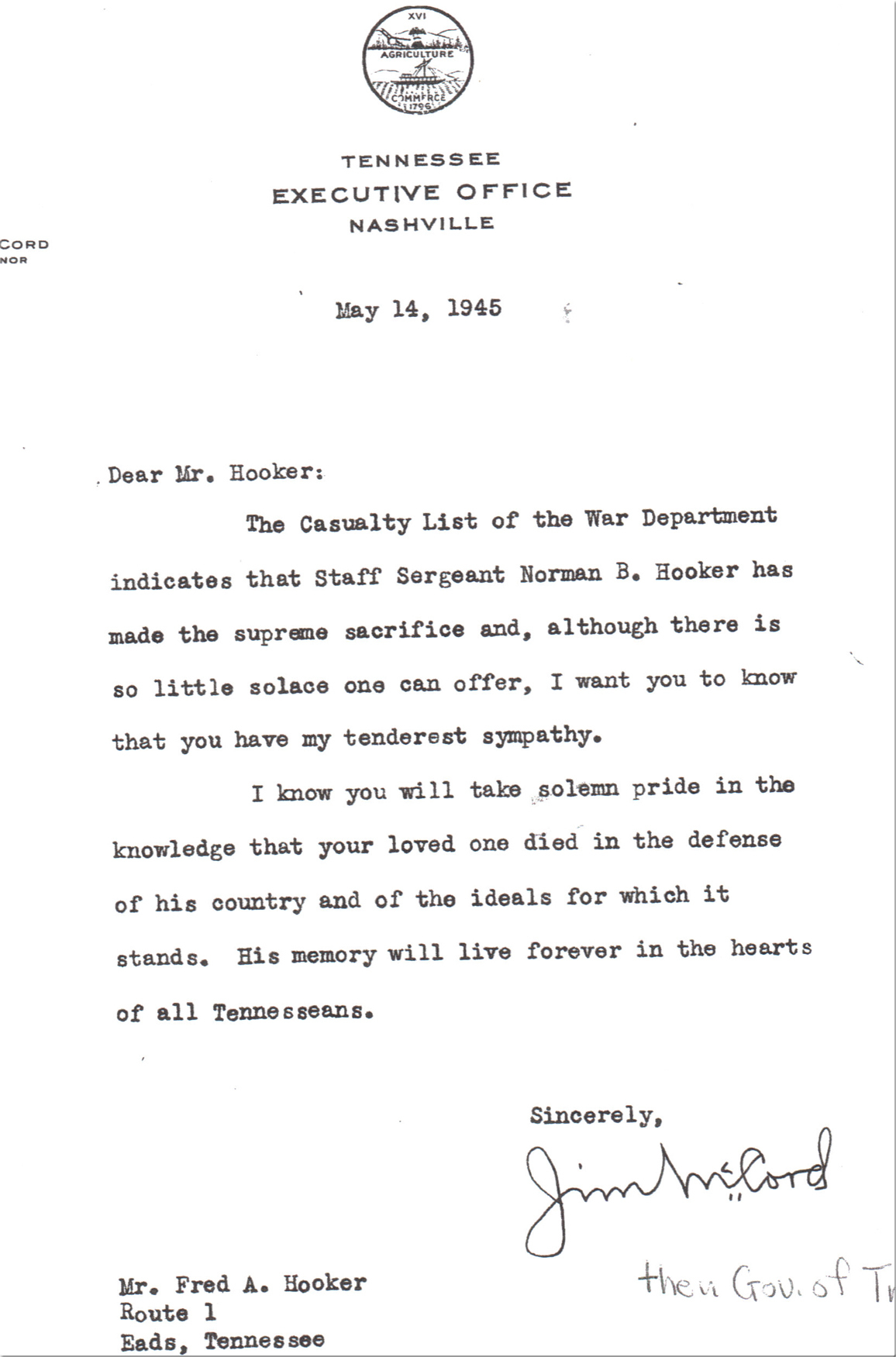 |
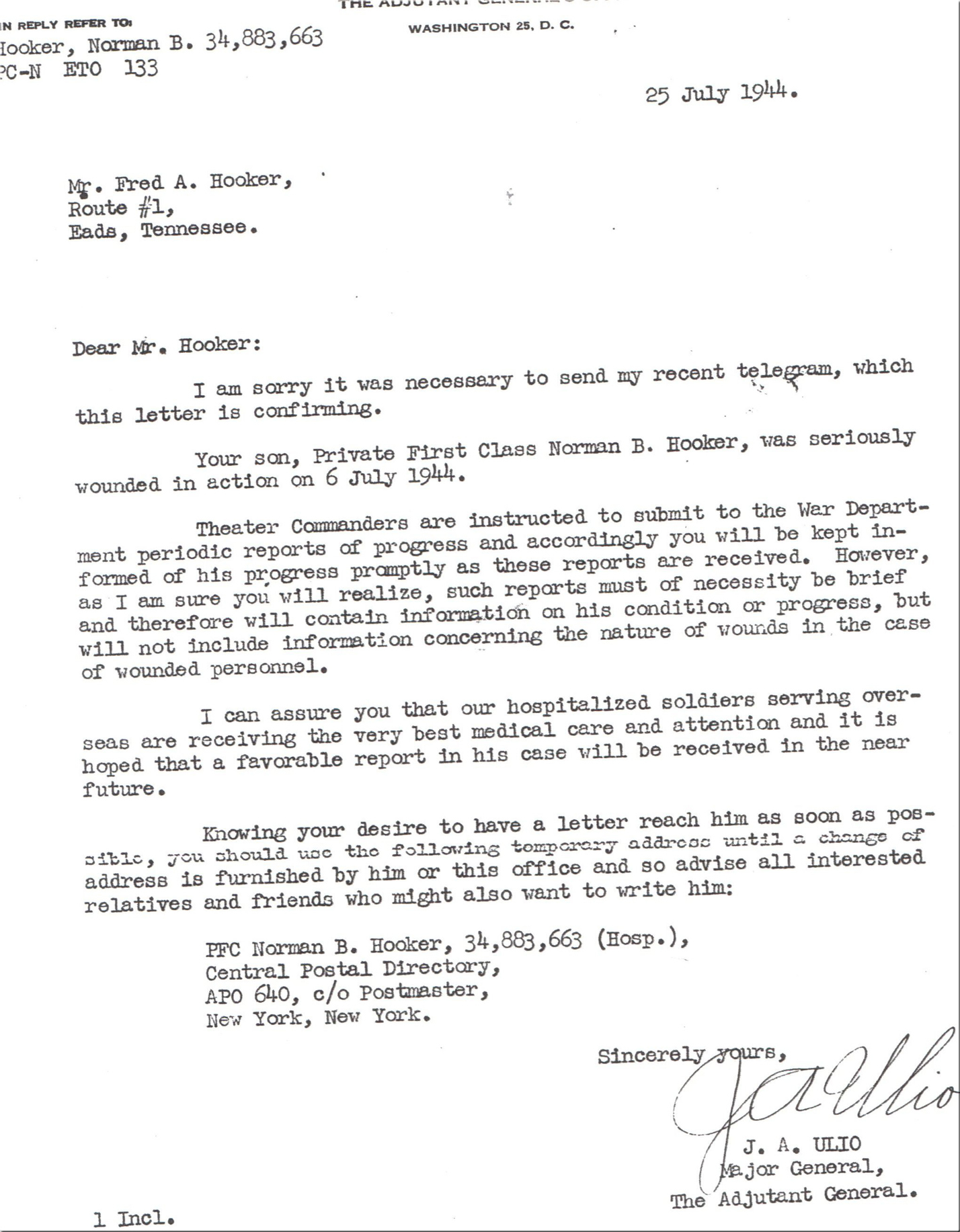 |
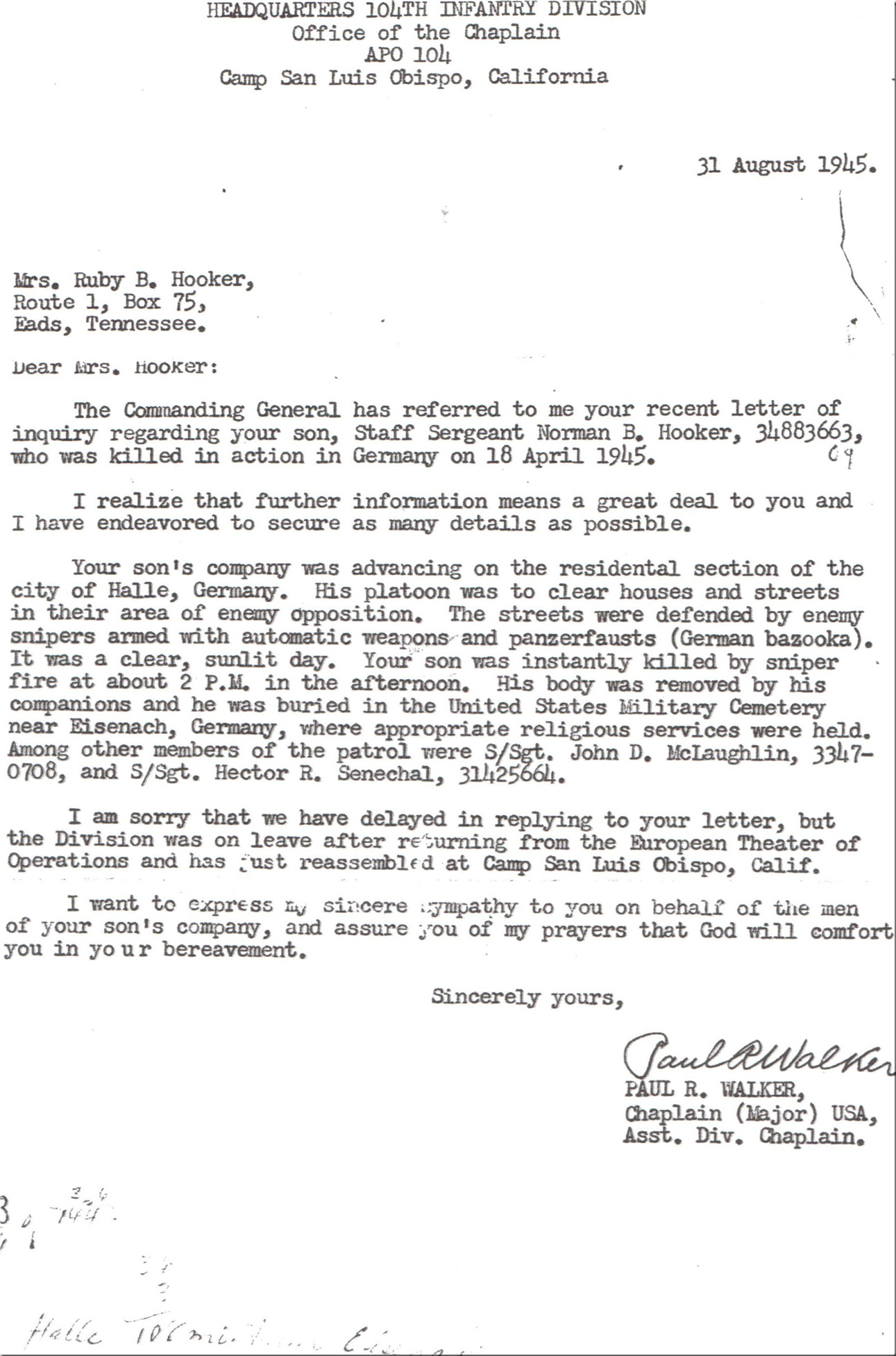 |
several
notices of death informing the next of kin of SSGT Norman B. Hooker |
|
The 104th Division had won many Presidential Citations and his unit, the 414th Regiment received this honor shortly before his death for their heroism.. The 104th Division fought 193 consecutive days, the longest of any unit in the infantry and never lost a foot of ground. Their motto, “Nothing in Hell Can Stop the Timberwolves” is indicative of their excellent training, courage, steadfastness and determination to end the war as soon as possible.
His military accomplishments, citations and medals are as follows:
Combat Infantry Badge, 331st
Infantry, Thunderbolts
Expert Combat Infantry Badge, 104th Infantry, Timberwolves
2 Purple Hearts (Oak leaf cluster), 331st Wounded, 104th, KIA
Bronze Star (104th)
Presidential Unit Citation, 104 th Infantry Division, 414th Regiment, Company
I
(2) Good Conduct Medals
Campaigns, (2) France, Belgium, Holland, Germany
European-Africa-Middle East Medal
Victory Medal World War II
World War II Occupation Medal, Army
American Campaign Medal
French Croix De Guerre
D-Day Commemorative
French Normandy Medal
Expert in Pistol, Rifle, Carbine, Automatic Rifle
He was a member of an elite 15 forward scouts called Rouge’s Raider’s who were responsible for all of the combat and reconnaissance patrols of their battalion. The “Timberwolves history” identifies him as one of the outstanding leaders in this group.
He is gone-but will never be forgotten!
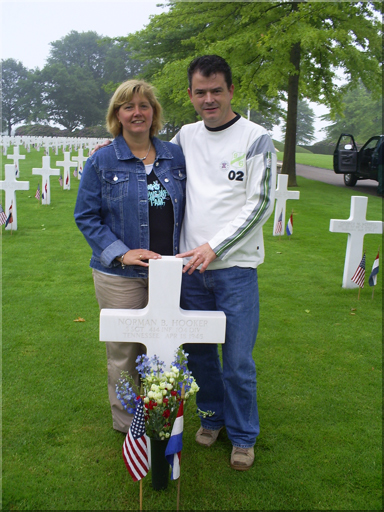 |
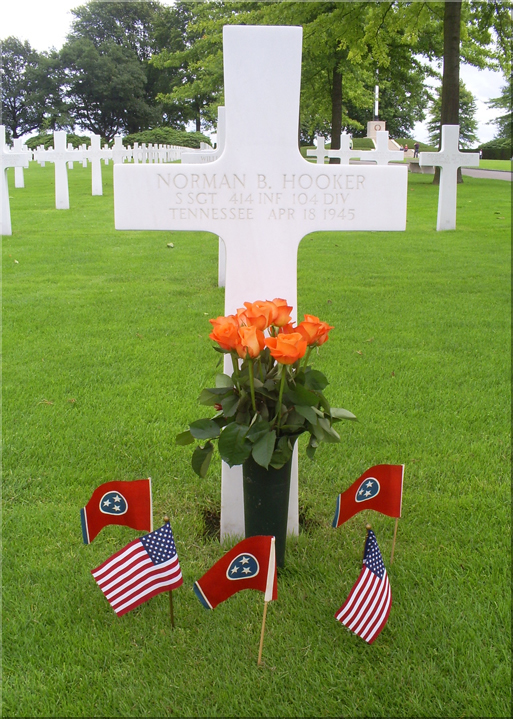 |
| Adopters Resi and Stephan at the grave of Norman B. Hooker | The grave of SSGT Norman Bryan hooker |
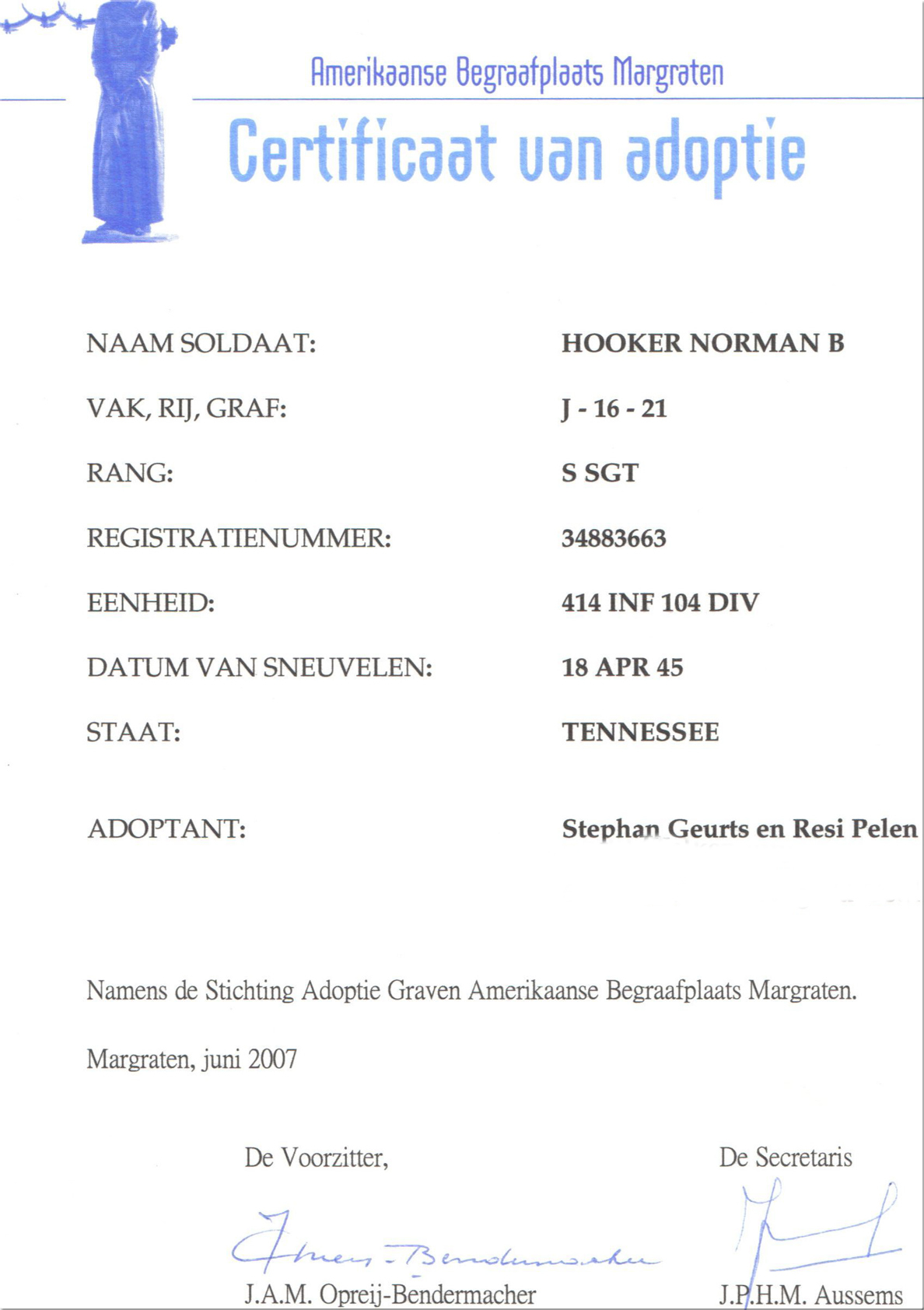 |
The
adoption certificate pertaining to the grave of Norman B. Hooker |
A special word of gratitude for sharing information is going out to : Mr. and Mrs. J.C. and Jane Hooker, resp. brother and sister-in-law of SSGT Norman B. Hooker Stephan and Resi Pelen, adopters of the grave of SSGT Norman B. Hooker |